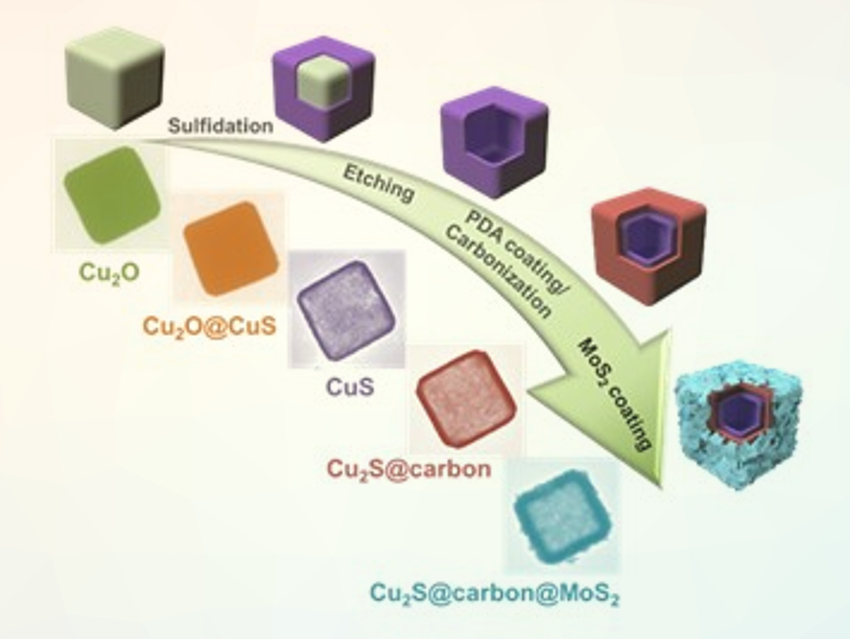Metal sulfides are promising anode materials for sodium-ion batteries (SIBs). This is due to their high specific capacity and good electrochemical reversibility. However, their poor rate capability and limited cycle life hinder the practical application of such materials.
Xiong Wen (David) Lou, Nanyang Technological University, Singapore, and colleagues have developed a multistep templating strategy to fabricate hierarchical nanoboxes composed of three layers (Cu2S@carbon@MoS2, pictured) as anode materials for SIBs. The team first prepared CuS nanoboxes via the sequential sulfidation and etching of Cu2O nanocubes. The CuS nanoboxes were then coated with polydopamine and carbonized to form Cu2S@carbon nanoboxes. Finally, a layer of MoS2 nanosheets was grown on the Cu2S@carbon composite through a solvothermal reaction to obtain Cu2S@carbon@MoS2 nanoboxes.
The anode materials provide a high rate capability and a long cycle life. The three-layered structure promotes the transportation of electrons and Na+ ions, buffers the volume change of the electrodes, enhances the electric conductivity of the composites, and helps to maintain structural stability during extended cycling.
- Rationally Designed Three-Layered Cu2S@Carbon@MoS2 Hierarchical Nanoboxes for Efficient Sodium Storage,
Yongjin Fang, Deyan Luan, Ye Chen, Shuyan Gao, Xiong Wen (David) Lou,
Angew. Chem. Int. Ed. 2020.
https://doi.org/10.1002/anie.201915917


